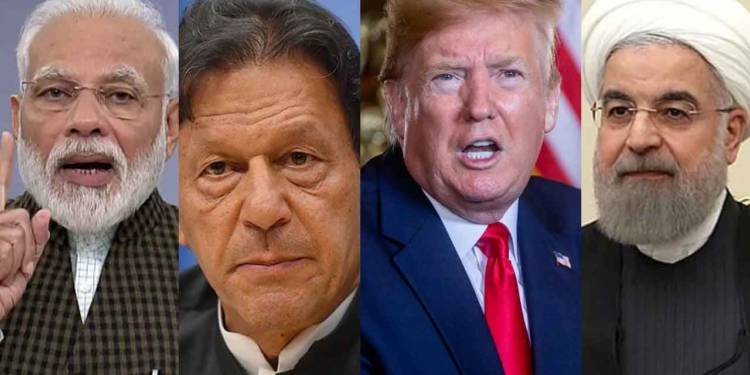The entire world heaves a sigh of relief after the de-escalation of rising tensions between the US and Iran. The episode of heightened tensions between the US and Iran following General Soleimani’s killing has thus come to an end. In a press briefing on Wednesday, President Trump softened his stance towards Iran. Trump claimed that Iran is “standing down” and welcomed de-escalation between Tehran and Washington, ending all speculations of a major war in the geopolitically crucial region.
Now, that the entire episode has unfolded and the picture is clear, one can gauge the fact that there is a stark similarity in General Soleimani’s killing and subsequent tensions, and the Balakot airstrikes that India had carried out last year. At that time too, things had escalated between New Delhi and Islamabad, however de-escalation had followed after few days of heightened tensions.
In fact, there is a clear resemblance in the nature of the operations conducted by the US few days ago and the Balakot airstrikes conducted by India last year. The US conducted pre-emptive strikes in Baghdad, in order to eliminate General Soleimani. In fact, the US President, Trump claimed that the attack on four US embassies which followed Soleimani’s killing was actually orchestrated by the slain General.
India’s Balakot airstrikes were also described by the Ministry of External Affairs as a “non-military pre-emptive strike”. The object was to eliminate Jaish e Mohammed-run madrasas (read ‘terror training camps’) in Balakot that were plotting terror attacks in India.
Even the response that followed bears uncanny similarity. Iran acted against the US by attacking American bases. However, there was a deliberate attempt to avoid US casualties. Iran knows for a fact that it cannot match the military might of the United States. Therefore, the missile strikes were carried out in the wee hours when most of the troops are usually asleep. This minimised the possibility of personnel roaming around the base who could have been killed or injured.
The US also happens to have a strong air defence system, a fact which must not have been lost on Iran. The missile attacks therefore did not make much rhyme or reason if they were intended to inflict casualties upon the United States.
Even Pakistan had resorted to an empty show of force after India carried out an air raid deep into its territory. Its retaliatory attack against India, the Pakistan Air Force (PAF) was not able to target a single Indian military installation in Jammu and Kashmir’s Rajouri-Poonch sector. The Indian military installations were not hit despite Pakistan using precision guided bombs on February 27. The terror state claimed that bomb was dropped near the Brigade Headquarters in Rajouri in order to show its capability.
Pakistan understood that India was ready to escalate further and would not hold back, in case the Islamic Republic had resorted to inflicting casualties against India. Just like the case of heightened tensions between the US and Iran, Pakistan also faced a mismatch in military might with India that went against it. Therefore, it was only prudent that Pakistan avoided a potential confrontation by deliberately avoiding any damage on India’s side.
Both Iran and Pakistan therefore deliberately avoided further escalations. In Iran’s case, the Iranian Ambassador to India explicitly said that Tehran would welcome any peace initiative from India. In the case of Pakistan, the release of Wing Commander, Abhinandan Varthaman, was the point that led to eventual de-escalation in tensions between India and Pakistan.
In fact, a closer analysis would reveal that there was intense domestic backlash in Iran following Soleimani’s killing. Similarly, there was a popular domestic sentiment against India in Pakistan after the Balakot raid. In both the cases, the establishment also had to do something in order to assuage the growing demand of a retaliation within the country. As such, a direct confrontation or further escalation was never an option. Therefore, the political objectives for both the countries were limited to an empty show of strength.
As far as India is concerned, tensions were diffused following the release of its Wing Commander. Similarly, the US too allowed the tense situation to de-escalate. As such both the superpowers had a lot of military might at their disposal, and there was no stopping them to escalate things even further. However, the two acted maturely and decided to diffuse tensions in favour of a more peaceful and secure world order.
As such, pre-emptive strikes achieved the end strategic objective in both the cases. There was nothing to be achieved by escalating tensions further. Therefore, how far the escalation ladder would climb was essentially dependant on the response by the opposite side in both the cases. The response being timid, there was never really an occasion to aggravate the situation further.


































